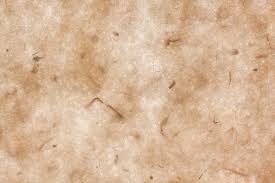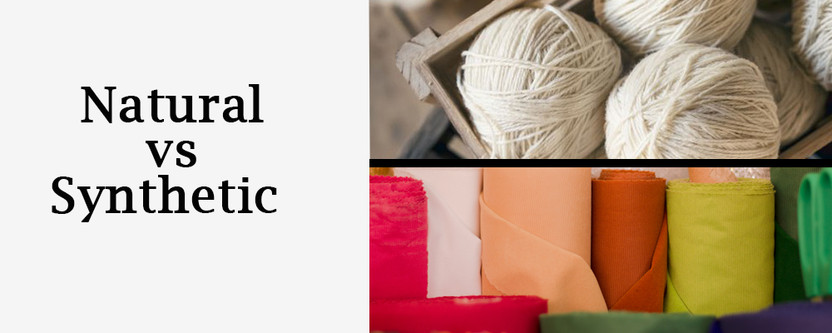Natural vs Synthetic fibre
Posted by NZ Natural Clothing on 19th Jun 2018
Being advocates for natural fibres, you’d be forgiven for thinking that we would use the next few hundred words to slam synthetic fibres and champion good old fashioned, all natural, NZ made wool.
Although tempting, a biased argument is no argument at all so instead we thought we’d take a look at artificial fabrics and see how they stack up against nature’s finest.

What makes a fibre synthetic?
Whereas natural fibres are defined as matters produced by plants or animals that can be spun and then knitted, matted, bound or woven; synthetics are made from inorganic or a mix of inorganic and organic materials.
Fabrics like polyester and nylon are made by melting the raw material (plastic or nylon chips) and forcing them through a spinneret under pressure. The tiny threads are then cooled and woven into fabrics.
Synthetics grew in popularity during and shortly after the Second World War as natural fibres - especially silk - were in short supply and - therefore - very expensive.
The explosion of industrialised processes coupled by a somewhat misguided assumption that artificial was somehow better, caused countries around the world to adopt clothing and even food that had - in some way - an artificial element to it.
As demand for natural fibres declined the price stayed high making natural fabrics a luxury.
What are synthetics good for?
Synthetics are used in everything from underwear to winter coats. The properties of synthetic fibres - because they’re made from plastic basically - makes them extremely hard wearing.
In the same way the body work of the average family saloon is hard wearing because - chemically speaking - it’s more or less the same thing.
However if you’re particularly accident prone or you plan on climbing up a mountain or two then a synthetic fibre jacket may be a sensible purchase.
There is no denying that synthetics are very good at mimicking the attributes of their organic counterparts - which is sort of the point.
There is no escaping the fact that technology has made it possible to create an acrylic wadding so fine and light that they far surpass anything in nature in terms of insulation. But then again, there aren’t many things in nature found at the top of Everest apart from a lot of snow and a few frostbitten fingertips.
So synthetics do have their place.
They hold on to that place by being very cheap. Because synthetics can be mass produced in a way natural materials can’t be - at least not without some extreme measures - anyone needing textiles can buy synthetic on a colossal scale.
However, what the manufacturer and the consumer save due to low cost production, they pay for in other ways.
Is there an ethical argument?
You bet your wool lined parka there is.
There are some that choose to buy synthetic fabrics over natural ones for ethical reasons - citing animal cruelty. It’s a valid argument and in some parts of the world animals reared for their fleece or hide are treated terribly, we can’t deny that.
Fierce competition from synthetics and an ever more consumerist world has caused some farmers to make some very poor decisions. We don’t support this and only deal with products made from ethically sourced wool.
The irony for those who buy synthetic on moral grounds is synthetics are - frankly - awful.
As with any heavily processed product - especially involving petrochemicals - there is always a degree of chemical runoff, most of which is toxic. Although many businesses do all they can to prevent toxic fumes and slurry from making it into the air and water, some are not so conscientious.
Moreover there is evidence to suggest that some synthetics can causes skin irritation and acrylics contain polyacrylonitrile which has been linked to cancer.
Don’t forget, because synthetics contain petrochemicals - derived from oil - they are harmful to the environment to produce and non-renewable. Meaning that, like the combustion engine, we can only rely on these materials for so long.
Although there are some ethical questions about organic materials - such as the water consumption required for sustainable cotton farming - these pale in comparison to habitat destruction, acid rain and air pollution.
Why organic is Awesome

Come on, you knew it was coming.
Much as the same as organic foods are better because there’s no pesticides, chemical fertilisers or processed feeds used, organic fabrics are naturally better for us.
Materials like cotton and wool are sustainable and can - through careful cross breeding - be improved. Admittedly that’s playing God a little bit but species cross breed in nature all the time and the alternative is no alternative at all.
The fact is that nature has provided us with perfectly good materials for clothing. Hemp jumpers for example (no, not that kind of hemp). So is there a need for synthetics beyond a financial one?
Yes, a cotton t-shirt requires 2,700 litres of water to make but the solution is to find better ways of farming cotton, not to turn to an unsustainable alternative that looks and feels as cheap as it was to make.
New Zealand spent over 2 centuries improving wool to the near wonder material it is now. It’s light and adapts to whatever environment you’re in. Synthetics just can’t do that. They just make you sweat as much when it’s cold as when it’s hot. In way that’s kind of amazing. Amazingly terrible.
Organics may not be as versatile as synthetics but they are better for the environment, better for our health and infinitely more comfortable to wear. And some organics - like Wool - can easily outlast synthetic clothing from a usefulness perspective if nothing else.
Ultimately there comes a point when we have to accept that being the dominant species on the planet means taking care of it. The solution isn’t synthetics but innovation with organic. Because when the oil runs out - and it will - the puffer jackets run out too.
To learn more about our Merino wool range of products, click here. Read about what makes Merino wool so special here.

